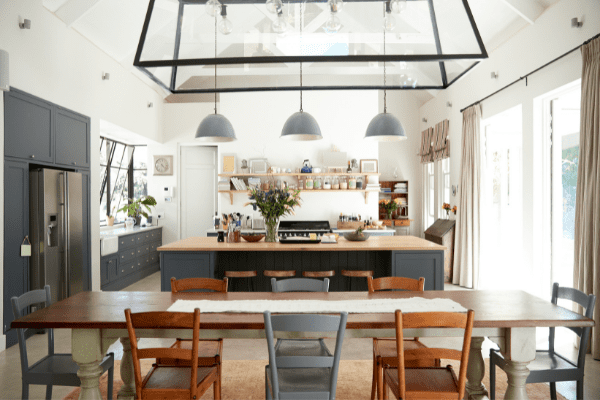
Restoring a period property is a labour of love. Whether in urban or rural areas, they reflect centuries of history: timber framed, or stone built, thatched or with an ancient tiled roof, they ooze character. For this reason, they are usually Listed, and/or in a Conservation Area, which requires local authorities to provide planning consent for improvements, which may restrict options, both externally and internally. Permitted Development rules are unlikely to apply; details can be found on www.planningportal.co.uk.
Researching a property’s history is engrossing, especially exploring who actually lived there over the generations, so it is worth taking a little time to get the ‘feel’ for a place. Local libraries, as well as conservation groups and council archives, are likely to have a lot of information, or can point you in the right direction to find out more. The Pevsner Architectural Guides are a fascinating read; the author spent 20 years recording the history of buildings and communities across all England in exquisite detail.
It is important to employ architects and contractors with experience of period properties, who respect their heritage, understand the physical sensitivities and can access the correct materials, and specialist equipment. Bringing properties up to modern environmental standards, with insulation and heating can be challenging, e.g. replacing windows with double or triple glazed units is not normally permitted because it affects the ‘integrity’ of buildings, so secondary glazing is the recommended alternative to retain heating. Period properties, in particular those with thatched roofs, can be vulnerable to fire risk because of how they are constructed, so asking the Fire Service to review plans and advise on essential safety measures, such as regular chimney sweeps, is sensible and will help with insurance.
Although the majority of period properties offered for sale, including the 500,000 Listed, usually only require updating to meet modern lifestyle requirements, full restoration, or converting outbuildings, can uncover hidden spaces, such as a ‘priest’s hole’ originally created to protect monks during the religious purges, and subsequently used by Royalists to escape during the Civil War.
As with any project, ensure that you have a realistic timetable with a comprehensive, and detailed, budget, listing all the works to be undertaken, contractors’ and material costs; add 10% for the unexpected. Always remember that anything within the curtilage of a Listed building – even a garden shed or garage – is included in that designation, requiring planning consent for alterations.
In the current market, properties are snapped up quickly, so it is advisable to have your finances in order before you start your search. This means securing a mortgage in principle, based on your total budget for purchase and any potential works likely to be required; all this information would be examined in detail when you have identified the right property and are ready to proceed.
Our Mortgage Centres have considerable experience of period properties, finding the most appropriate mortgages to suit individual circumstances, enabling our clients to realise their aspirations for a home full of historic character. Just give us a call.
- Blog



